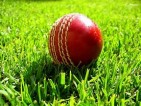A look back at South Africa’s 1997/98 Test tour of Australia
Marco Trevisiol |Australia & South Africa played back-to-back drawn series in both countries during the 1993/94 season that were full of tight, compelling cricket. But with both sides often thinking of saving a Test before winning it, the cricket could on occasion be laborious and the final Test of the South African series in Durban (Allan Border’s final Test) was a prime example of this. It was a dismal, dreary match with both sides seemingly happy with a draw, epitomised by South Africa taking over 200 overs to score 422.
For incoming Mark Taylor, it was a Test he took note of and one of the mantras of his captaincy would be for Australia to be more aggressive and purposeful in their play. And it proved to have significant dividends as Australia rose to become the No. 1 side in the world, memorably knocking off the West Indies in the Caribbean in 1995.
By the late 1990s, their greatest challenger was increasingly seen to be South Africa who handled the return to Test cricket after decades away with aplomb. Australia had their measure when they toured South Africa in early 1997, winning 2-1 with a two wicket win in the 2nd Test one of Australia’s gutsiest wins of the decade.
But when South Africa toured Australia for the 1997/98 season for a 3 Test series, they were confident they could knock Australia off. Their squad appeared stronger than the side that toured 4 years before with pace spearhead Allan Donald having proven himself as one of the finest bowlers in the world. There was lots of young quality talent in the lineup such as seamer Shaun Pollock, all-rounder Jacques Kallis and attacking batsman Hershelle Gibbs. And they were being ably led by youthful captain Hansie Cronje.
But if South Africa thought themselves a stronger side then their 1993/94 model, so was the Australian side. Led by the resourceful and intuitive Mark Taylor, Australia hadn’t lost a Test series since a very narrow series loss in Pakistan in 1994 and had not only been unbeatable at home, but had won series in South Africa, England and the West Indies. They had two great bowlers in leg-spinner Shane Warne (who’d tormented South Africa in previous encounters) and paceman Glenn McGrath and had plentiful quality batsmen led by the Waugh brothers. If South Africa were going to win, they were going to have to be at their absolute best.
The Test series began on Boxing Day at the MCG in front of the usual huge crowd. Batting first, Australia were atypically timid as the variety of the South Africa attack stymied them throughout the first half of the day, limping to 4/77. That the usually aggressive Mark Waugh was dismissed for an 18 ball duck summed up their struggles.
But Australia rebounded with the resilient Steve Waugh and Ricky Ponting (having his breakout summer), counter-attack with a 145 runs. Ponting went on to score 105 leading the side to a respectable 309.
South Africa’s response showed that while Australia when necessary could be aggressive and attacking when required, South Africa were too often bogged down in conservative 1993/94 mindsets. They took a painful 106.5 overs to score just 186. To be sure they were facing an excellent attack and the pitch wasn’t a batsman’s paradise, but the main factor seemed to be South Africa’s conservatism.
But South Africa were fighters and they responded superbly at the start of Australia’s 2nd innings, with Allan Donald helping Australia to be on the brink at 3/12. But Australia slowly recovered, and from the unlikely source of paceman Paul Reiffel. To be sure his batting form in the 1997/98 season had been his best ever, but to contribute an undefeated 79 off just 115 deliveries in a score of 257 was probably the highlight of his batting career.
Therefore South Africa had four sessions to get a draw (or score an unlikely 381). But this is where their conservative abilities came to the fore as batting for an unlikely draw brought out their greatest strengths. So despite losing experienced batsmen, Gary Kirsten and Darryl Cullinan (again dismissed by Warne for a duck), they just survived with Jacques Kallis playing superbly to score a century. Up until this time Kallis had a poor Test record but South Africa could see that he was a talent well worth persevering with and this was the first significant achievement in one of the great Test careers.
After their great escape in Melbourne, South Africa were faced with a great opportunity in the New Year’s Sydney Test. Australia had taken an enormous risk in deciding to go with just three bowlers, backed up by the part-time left-arm legspin of Michael Bevan. As well, the Test started just three days after a gruelling workload for the Australian bowlers so when South Africa batted first on a placid pitch, an opportunity for a big score was in the offing.
And yet after Day 1 South Africa had only managed to score 198 runs despite only losing 5 wickets and 97 overs being bowled. South Africa’s wastefulness and timidity was summed up by Brian McMillian hitting a rank waist-high full toss from Bevan straight to mid-wicket.
South Africa reached a moderate 287 and did have Australia in trouble early. But Mark Waugh (who had been in poor form in the previous 12 months) showed why he was persisted with by the selectors even due a run of outs by a stylish century. It was the sort of aggressive intent (by the scoring rates of that match anyway) that South Africa just couldn’t seem to produce against Australia in this era, and it was probably the difference in the series.
Australia had a 1st innings lead of 124 which seemed significant… but soon proved to be matchwinning as Shane Warne totally destroyed the South African batting lineup as he had in the corresponding SCG Test 4 years ago. But there would be no miracle escape for South Africa this time as Warne’s 6/34 ensured Australia won by an innings and 21 runs just as the rain was going to put an end to proceedings on the 4th evening.
Sydney had been an enormously disappointing experience for South Africa and they suffered further disappointment in the one-day tri-series (New Zealand was the third participant) as after dominating the qualifiers, Australia proved too strong in the finals series. That Australia had the mental edge over their strong rivals was becoming a clear theme by now.
But South Africa had a chance for redemption in the final Test in Adelaide and they were facing an Australian side with some vulnerabilities. Glenn McGrath was out injured, Shane Warne was beginning to feel the effects of a shoulder problem (which he would have an operation for later in the year) and they had some out-of-form batsmen in Matthew Elliott and Greg Blewett (both would be dropped in the coming months).
With Paul Reiffel also missing, Australia’s bowling attack was one of their weaker ones in this era which comprised of Andy Bichel (3rd Test), Michael Kasprowicz and debutant leg-spinner Stuart MacGill backing Warne. South Africa also suffered a significant loss with star paceman Allan Donald out injured but Australia were clearly vulnerable.
South Africa batted first and reached a substantial 517. At times it seemed they were going too slowly but their extremely strong batting tail finally cut loose with No. 11 Pat Symcox blasting 54 off 42 deliveries.
Australia’s reply was almost entirely reliant on their captain Taylor carrying his bat for 169, an especially remarkable achievement considering during much of the previous year he was in such poor form with the bat only his captaincy skills saved him.
South Africa got some quick runs on the 4th day in reply with MacGill getting some wickets and giving a sign that he would be an able support and replacement for Warne in years to come.
So like in the corresponding match at Adelaide four years before, a side would have to bat three and a half sessions to survive, except this time roles were reversed. When Australia lost two wickets late on the 4th evening – including Taylor – it appeared they were well on the way to victory. But they had also dropped Mark Waugh that evening and that was to prove highly costly.
Mark Waugh topped his century in the Sydney Test by batting through the final day of the Adelaide Test and with decent contributions from the middle and lower order Australia pulled off a remarkable draw after appearing in a hopeless position late on the 4th evening.
Again it seemed South Africa’s temperament under pressure failed them. They dropped numerous chances throughout the match and the palpable anger from their captain when Waugh wasn’t dismissed for hitting his wicket on the final evening, while understandable to an extent, was a sign that they were too intense a side. This was further enforced when post-match Cronje threw a stump through the umpire’s dressing room.
As it was, South Africa’s lack of quality spin (and struggles against playing it) and tenseness under pressure had proven pivotal in their ability to defeat a very strong Australian side. For Australia, they had done exceptionally well against a strong opponent to triumph after the disappointment of failing to win in Melbourne and having to overcome multiple injuries and out-of-form players in Adelaide. Their great players like the Waugh brothers and Warne had come through when it counted. It was symbolic of the success of the Taylor era.





Leave a comment